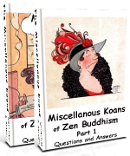Ancient India History - Early Civilizations
Free ebooks!
Zen Riddle #12-stone :
What's written on the stone 10000 meter deep in the ocean?
Here's the answer....(Show/Hide)
Want more riddles? Choose one!
#21-karma #22-strength #23-piss mumonkan
Ancient India history began about 40,000 years ago when humans from Africa, Central and West Asia re-occupied the subcontinent, after the geo-magnetic destruction of the world. Check out my history of ancient india.Zen Riddle #12-stone :
What's written on the stone 10000 meter deep in the ocean?
Here's the answer....(Show/Hide)
Want more riddles? Choose one!
#21-karma #22-strength #23-piss mumonkan
These new indigenous Indians were hunters and gatherers until they learned about farming in the Indus valley civilization about 20,000 years later .
Becoming villagers these Dravidians had trade contacts as far as Egypt and slowly developed the first urban civilization on India soil.
More details about prehistoric India are told at history of ancient India.
Ancient India history changed about 4000 years ago when nomadic Indo-European tribes came from the Indus Valley. These tribes originally settled in central Asia. Draught pushed them to the Caspian Sea. They stayed there for about 20.000 years, before they too left for the Indus valley the most advanced culture of that time in asia.

History of India Timeline
The Tribes from the Caspian Sea
Although these tribes were militarily superior with chariots and horses they didn't invade or destroyed the civilization at the Indus Valley.
In the contrary. The newcomer became acculturated into this advanced culture and stayed.
They adapted to the scientific knowledge and philosophical concepts of their host civilization, thereby elaborating and enriching their own tribal mythology.
But the assimilation was limited.
- The newcomers developed no writing for their Indo-European language.
- They preserved and transmitted their knowledge only through oral transmission.
- They kept their violent nomadic habits.
- Their archaic family system of clans and kinship remained untouched.
- Traditional clans became even more important during the permanent wars in the Ganges valley and later in India.
The Vedic Civilization along the Ganges river
Around 1300 BC when the Indus Valley Civilization during a severe draught broke down most the Indo-European tribes had already moved out to settle on fertile land along the Ganges river close to the Himalayan foothills.
The had picked up lots of cultural knowledge during about 1500 years at the Indus. But the arayan tribes also kept their nomadic fighting spirit. This behavior made them the within 1000 years the dominant group in ancient India history.
The indigenous dravidian population retreated to the South, becoming more and more suppressed or enslaved.
Heroic stories about these violent centuries occupation merged with the cultural heritage from the Indus Valley (Vedas) into new fascinating hymnal narratives, the Upanishads.
Both narratives became the holy tradition of all Indo-European tribes in India during the later centuries of the ancient history of India.
The Vedas and the later Upanishads transformed fighting tribes into the belligerent Vedic civilization.

The conformance of Indo-Europeans to civilized norms and standards was limited
- Small cities developed that integrated tribal communities into small kingdoms.
- Trade and agricultural production intensified.
- New religious movements challenged Vedic traditions.
- The traditional sacrifice of livestock was challenged.
- Ascetic beggars preached non-violence (ahimsa), social equality and droped the casts.
- One of these ascets, Gotama Shakyamuni was later called the "Buddha".

Peace! Peace!
From the fifth century BC onwards the influence of the Buddhas teaching increased in northern India.
Buddhism opposed the violence between the Ganges Valley tribes and kingdoms.
Siddharta Gotama, the later Buddha, was a born farmer and trained warrior of the Shakya tribe that settled near today`s Nepal.
The history of Buddha is the legend of Gotama's pacification.
- He gave up his warrior carrier and became an ascetic.
- After some years he stopped fighting against his body.
- Instead he taught meditation as a peaceful detachment from desire and suffering.
A brief history of Buddhism shows, that the new religion became more and more attractive not only in India but also in China and in many other Asian countries.

Ancient History of India
India in Historic Times
During later centuries Greeks, Mongolians and Muslims invaded India.
From the second century CE onwards Chinese monks stayed in Buddhist centers in Northern Indian.
The Vedic tradition integrated many traits of these cultures but always claimed to be unchanged from ancient times.
Since the 18th century, when the British ruled India, European missionaries and scientists explored and labelled the ancient Indian culture.
- The indigenous people of India were called Dravidians, untouchables, dalits or tribals.
- The Indo-Europeans were baptised "Aryans", Hindus or members of a Brahmanic culture.
- Brahmanism became honoured as the cradle of European civilisations.
In the early 20th century the ancient sites of the prehistoric indigenous Civilization in the Indus Valley were excavated and their findings turned ancient India history upside down.
But traditional India hasn`t acknowledged these changes yet.
It is still unthinkable in India that the forefathers of today`s Brahmins might once in the Indus Valley have been civilized by indigenous Indians, most probably Dravidians.
Return to first part: History of ancient India
Go to Buddhism History
Return to Zen Buddhism Home from ancient India history



